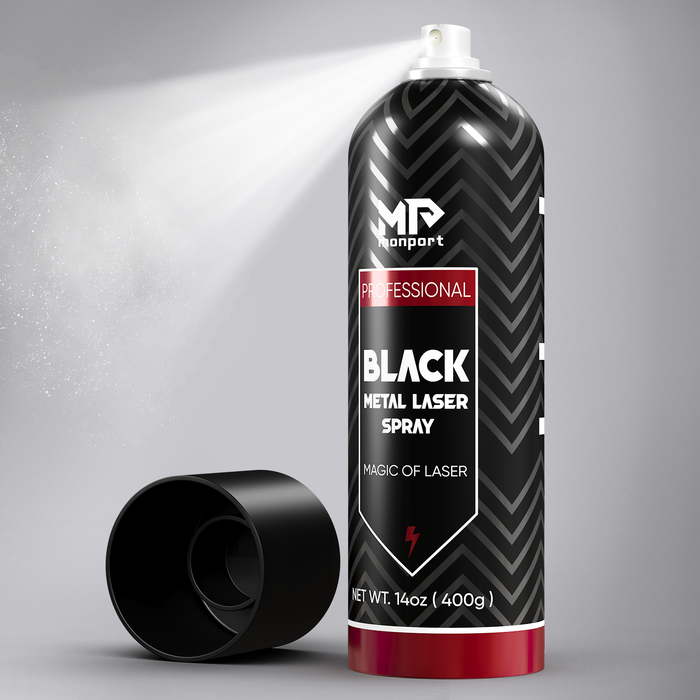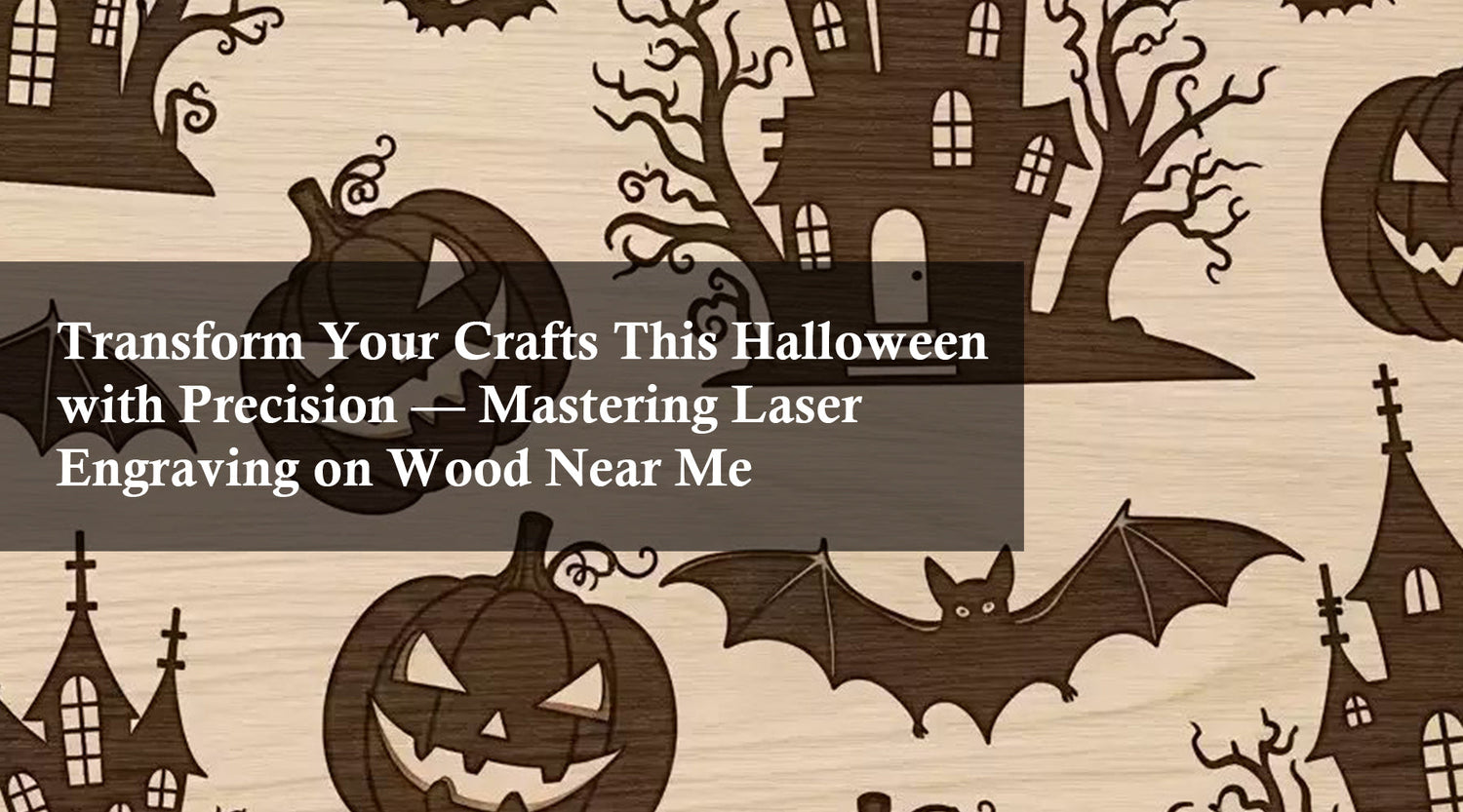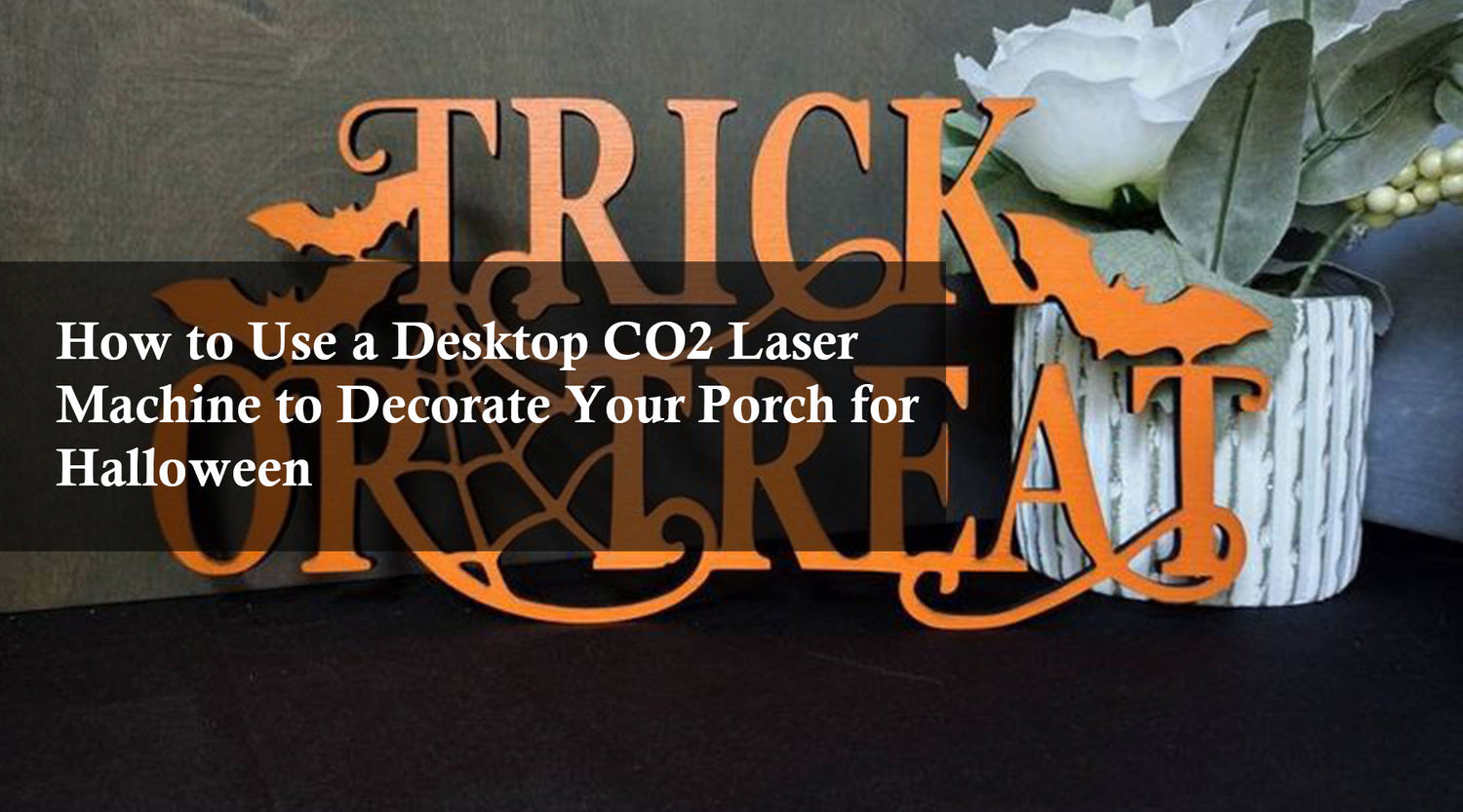Plexiglass, also known as acrylic, is a versatile material for laser engraved glass prized for its clarity, durability, and ease of use. But can you etch acrylic effectively for detailed, professional designs? The answer is yes—and with the right tools, like a laser etching machine, you can transform ordinary plexiglass into stunning personalized items. Understanding the differences in engraving vs etching can help you choose the best method for your project.
This guide delves into the exciting world of plexiglass etching, exploring various techniques and offering valuable tips to bring your artistic vision to life, while also highlighting how black laser marking spray can be used for achieving bold, dark markings on compatible metal surfaces in mixed-material projects. including etching plexiglass with etching cream. If you're wondering, can you etch plexiglass, the answer is yes—laser engraving glass and other methods can create beautiful, detailed designs on plexiglass surfaces. Whether you're a seasoned crafter or a curious beginner, this comprehensive resource will equip you with the knowledge of how to etch plexiglass like a pro using a laser etching machine such as the Monport 40W desktop laser engraver.
Monport 40W Pro Lightburn-Supported (12" X 8") CO2 Laser Engraver & Cutter with Air Assist - 40W Pro
Read More : Start Your Small Business Using Laser Cut Plexiglass
Unlock Big Savings at Monport Laser! Use code BESTMP10 at checkout for an exclusive discount – Click here to shop now!
What is Plexiglass Etching?
Plexiglass engraving involves altering the surface of acrylic to create images, text, or textures. If you've asked, can you etch acrylic? — you'll be pleased to know that several techniques offer different results depending on your creative goals. Knowing the nuances between engraving vs etching is essential to achieve professional results.
Can You Etch Acrylic with a Laser?
Absolutely. In fact, plexiglass engraving with a laser is one of the most effective methods for achieving clean, professional results. Machines like the Monport 40W Pro CO₂ Laser Engraver offer high-speed, 0.01-inch accuracy, making them ideal for engraving intricate designs on acrylic.
For added versatility, a rotary laser attachment allows you to engrave on curved or cylindrical surfaces, making laser plexiglass engraving suitable for a wide range of personalized products.
Popular Plexiglass Etching Techniques:
There are several methods of etching on acrylic, each offering unique aesthetics and workflow preferences. Below is a breakdown of the most popular techniques:

-
Laser Engraving: For unmatched precision and intricate detail, laser engraving glass reigns supreme. How to etch plexiglass with a laser etching machine like the Monport 40W desktop laser engraver utilizes a focused beam of light to vaporize the material, leaving behind a permanent, clean design. This method is ideal for logos, lettering, and complex patterns. Understanding engraving vs etching ensures you choose the right technique for your artwork.

-
Chemical Etching: A more traditional approach, chemical etching utilizes solvents to dissolve specific areas of the plexiglass, creating a frosted effect. Laser engraved glasses can be achieved with this drypoint method by applying a protective mask to define the desired design. Chemical etching offers a cost-effective solution for simpler patterns.

-
Sandblasting: For a more textured appearance, sandblasting propels a stream of abrasive particles against the plexiglass surface. This technique creates a matte finish with varying depths depending on the blasting time. Sandblasting is well-suited for large projects and achieving a distinctive, opaque look, including etching plexiglass with etching cream.

-
Rotary Tool Engraving: For a hands-on approach, a rotary tool equipped with a diamond engraving bit allows for freehand etching directly onto the plexiglass. This method offers creative freedom but requires a steady hand and practice for achieving consistent results. You may also integrate a rotary laser attachment for more intricate work, providing enhanced detail and smoother designs.
Considerations for Etching Plexiglass

-
Project Complexity: The desired level of detail will influence the choice of technique. Laser engraving excels for intricate designs, while chemical etching is suitable for simpler patterns. Consider whether a rotary laser attachment might allow you to add even more intricate elements to your design.
-
Desired Finish: Do you envision a clean, precise line or a textured, frosted effect? Laser engraving delivers sharp lines, while sandblasting creates a rougher texture.
-
Budget and Equipment: Laser engraving machines require a significant investment, while chemical etching offers a more budget-friendly option. Rotary tool engraving falls somewhere in between, requiring the purchase of a specialized tool. The addition of a rotary laser attachment may increase the initial investment but will expand your design capabilities.
-
Safety: Always prioritize safety when working with plexiglass and etching tools. Chemical etching involves hazardous materials, necessitating proper ventilation and protective gear. Sandblasting generates dust, requiring respiratory protection. When using a laser engraver or rotary laser attachment, wear safety glasses to shield your eyes from debris while etching plexiglass with etching cream.
Why Choose Laser Etching for Plexiglass?
With its high-speed operation, 0.01-inch accuracy, and exceptional compatibility, the Monport 40W Pro CO2 Laser Engraver is the top choice for professional-level etching on acrylic. Deciding between engraving vs etching makes it easier to select the ideal method for your project.
Plus, when your designs combine acrylic and metal, pairing this engraver with black laser marking spray ensures high-contrast results across materials.

-
Exceptional Speed and Precision: This machine guarantees high-speed engraving, reaching up to 350mm/s, while maintaining incredible accuracy of 0.01 inches. Your plexiglass projects will be completed efficiently and with stunning detail. With the rotary laser attachment, the detail of curved designs will be amplified.
-
Seamless Compatibility: The 40W Pro is equipped with an upgraded control board for smooth operation with Lightburn, the industry-leading laser engraving software. Lightburn offers a vast library of design options and intuitive controls to bring your ideas to life.
-
Built-in Air Assist: This innovative feature significantly reduces the carbonization effects often seen when engraving on plexiglass. The air assist ensures clean, crisp lines and eliminates unwanted smudging, resulting in high-clarity etchings.
-
Precise Control: The Monport 40W Pro boasts a suite of features that enhance your control over the etching process. The 19mm Adjustable Laser Head allows for fine-tuning the laser's focus, while the Red Dot Guidance mounted on the head provides a visual representation of the laser path, ensuring perfect alignment for your etchings.
The Monport 40W Pro CO2 Laser Engraver: Your Plexiglass Etching Partner

With its impressive speed, precision, and user-friendly features, the Monport 40W Pro CO2 laser engraver is the perfect tool for how to etch plexiglass and creating stunning personalized items. If you’ve ever wondered, can you etch plexiglass, this powerful laser engraver proves that you can. Whether you're a professional crafter or a hobbyist looking to explore new creative avenues, it empowers you to turn your plexiglass visions into reality with etching plexiglass with etching cream. Plus, for projects that combine plexiglass and metal, incorporating black laser marking spray allows you to achieve rich, high-contrast markings on metal surfaces, expanding your creative options even further. Always consider engraving vs etching when choosing your method.
Preparing for Plexiglass Etching
For mixed-material projects that include metal, the black laser marking spray ensures that your metal designs are just as bold and clean as your etching on acrylic. Use it to create high-contrast marks on stainless steel, aluminum, or brass—then combine them with your acrylic panels for stunning, professional results.
-
Plexiglass sheet: Select a sheet with the desired thickness and size for your project. Consider the complexity of your design when choosing the thickness.
-
Safety gear: Safety glasses and gloves are crucial to protect yourself from dust particles or splashes during the etching process.
-
Masking material: For all etching techniques except laser engraving, you'll need masking material like vinyl or painter's tape to create your design on the plexiglass surface.
-
Etching tools: Depending on your chosen method, you'll need a rotary tool with diamond engraving bits, a chemical etching cream, or a laser engraver.
How to Etch Plexiglass: Step-by-Step
The specific steps involved in etching plexiglass will vary depending on the technique chosen. Here's a general overview:
-
Design and transfer: Create your design digitally for laser etching or draw it directly onto the plexiglass using a marker for other methods. If using masking materials, meticulously apply them to mask the areas you don't want etched.
-
Etching: For mechanical etching, carefully follow the instructions for your rotary tool and engraving bits. When using chemical etching creams, ensure proper ventilation and strictly adhere to the product's application instructions. With laser etching, import your design into the laser engraver's software and adjust settings according to the desired etching depth and material thickness.
-
Cleaning and finishing: Once the etching process is complete, remove any remaining masking material and thoroughly clean the plexiglass surface with a soft cloth and appropriate cleaning solutions.
Tips and Tricks for Flawless Etching Plexiglass
Here are some valuable tips to elevate your plexiglass etching experience:
-
Start with a clean and dust-free plexiglass surface.
-
Practice your design on a scrap piece of plexiglass before etching your final project.
-
Use proper ventilation when working with chemical etching solutions.
-
For laser etching, experiment with different power settings and engraving speeds to achieve the desired results. The Monport 40W Pro CO2 laser engraver [laser engraved glasses] offers user-friendly software that allows for precise control over these settings.
-
When using a rotary tool, maintain a light and steady touch to prevent accidental gouges in the plexiglass.
With a little practice and the right tools, etching plexiglass with etching cream opens a world of creative possibilities. From personalized home décor and signage to unique gifts and artistic creations, the applications are endless. So, unleash your inner artist, grab your etching tools, and get ready to transform ordinary plexiglass into extraordinary masterpieces!
Applications of Etched Plexiglass:
Etched plexiglass boasts a wide range of laser engraved glasses application, both functional and decorative. Here are a few examples:

-
Signage: Etched logos and lettering on plexiglass create professional-looking signs for businesses and organizations.
-
Awards and Recognition: Etched plaques and trophies add a touch of elegance and personalization for commemorating achievements.
-
Home Decor: Etched plexiglass can be incorporated into decorative elements like coasters, wall hangings, or lampshades, adding a unique touch to any living space.
-
Privacy Screens: Etching patterns onto plexiglass panels creates a stylish solution for maintaining privacy while allowing light transmission.
-
Art and Design: Plexiglass offers a versatile canvas for artists and designers. Etching techniques can be used to create intricate sculptures, personalized gifts, or unique art pieces.
FAQs
1. Can you etch plexiglass with a laser engraver?
Yes. Laser etching is one of the most precise and efficient ways to engrave plexiglass. A machine like the Monport 40W Pro CO2 Laser Engraver can achieve 0.01-inch accuracy, producing clean, detailed results for text, logos, and intricate patterns.
2. What are the main methods for etching plexiglass?
The most popular techniques include:
-
Laser engraving for sharp, detailed designs
-
Chemical etching for a frosted effect
-
Sandblasting for a textured, matte finish
-
Rotary tool engraving for a more hands-on, freehand approach
3. Do I need special safety precautions when etching plexiglass?
Yes. Always wear safety glasses and gloves. For chemical etching, work in a well-ventilated space and follow product instructions carefully. For sandblasting, wear respiratory protection. When using a laser engraver, avoid direct eye exposure to the laser beam.
4. Can I combine plexiglass etching with metal engraving in one project?
Absolutely. You can use black laser marking spray on metals like stainless steel, aluminum, or brass for high-contrast results. This makes it easy to create mixed-material projects that combine etched plexiglass with engraved metal components.
5. What are some creative uses for etched plexiglass?
Etched plexiglass is perfect for:
-
Signage and business branding
-
Awards and trophies
-
Personalized home décor
-
Privacy panels and partitions
-
Artistic creations such as sculptures or wall art
Conclusion: Transforming Plexiglass into Personalized Masterpieces
So, can you etch acrylic? With the right tools like the Monport 40W Pro, not only is it possible—it’s incredibly rewarding. From signage to art pieces, you can create beautiful, detailed, and professional-looking designs that elevate any space. Understanding engraving vs etching ensures you pick the best technique for your project.
Ready to unleash your inner artist and explore the world of etching plexiglass with etching cream? Visit the Monport website today to learn more about the 40W Pro CO2 laser engraver and discover how it can elevate your crafting experience. With this powerful tool at your disposal, the only limit is your imagination!











